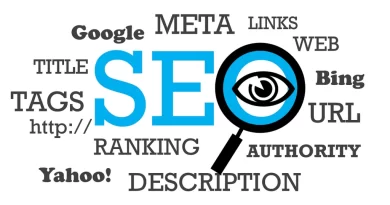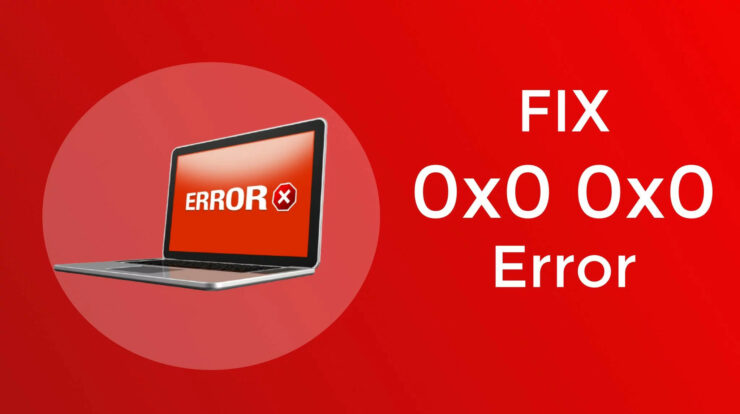Conversion Rate Optimization: How To Increase ROI With Your Existing Traffic
In the world of digital marketing, the success of a website or online business is determined by its ability to convert visitors into customers. Conversion rate optimization (CRO) is the process of increasing the percentage of website visitors who take a desired action, such as making a purchase, filling out a form, or signing up for a newsletter. By improving the conversion rate of your website, you can increase your return on investment (ROI) without increasing your traffic.
In this article, we will discuss how you can optimize your website’s conversion rate to improve your ROI with your existing traffic. We will also explore the role of CRO agencies and consultants in helping you achieve your conversion rate optimization goals.
What is Conversion Rate Optimization?
Conversion rate optimization (CRO) is the process of improving the percentage of website visitors who take a desired action, such as making a purchase or filling out a form. This is done by analyzing user behavior on the website, identifying areas where visitors are dropping off or getting stuck, and implementing changes to improve the user experience and encourage more conversions.
CRO Marketing vs. Traditional Marketing
CRO (Conversion Rate Optimization) marketing and traditional marketing are two different approaches to driving conversions and sales.
CRO marketing is focused on optimizing the user experience of a website or digital platform to increase the percentage of visitors who take a desired action, such as making a purchase, filling out a form, or signing up for a newsletter. The goal of CRO marketing is to increase the conversion rate of a website or digital platform, which can lead to increased revenue and customer engagement.
On the other hand, traditional marketing involves promoting products or services through various channels such as TV, radio, print ads, billboards, and direct mail. Traditional marketing aims to create awareness, generate interest, and promote a brand’s products or services to a large audience.
Here are some examples of how CRO marketing and traditional marketing differ:
Example 1: A clothing brand wants to increase sales of its products online.
CRO Marketing: The clothing brand conducts A/B testing on its website, optimizing the layout, design, and copy of its product pages to improve the user experience and increase the conversion rate of visitors who add items to their shopping cart and complete a purchase.
Traditional Marketing: The clothing brand launches a TV ad campaign showcasing its latest clothing line and promoting a sale. The ad targets a broad audience and aims to create awareness and generate interest in the brand’s products.
Example 2: A software company wants to increase the number of free trial sign-ups for its product.
CRO Marketing: The software company redesigns its landing page, simplifying the sign-up process and highlighting the benefits of its software. The company also implements a pop-up form to capture visitor’s email addresses and offer them a discount on the software if they sign up for a free trial.
Traditional Marketing: The software company purchases a list of leads and sends out a direct mail campaign promoting its software and offering a free trial. The campaign targets a specific audience based on industry and company size.
In summary, CRO marketing is focused on optimizing the user experience of a website or digital platform to increase conversions, while traditional marketing is focused on creating brand awareness and generating interest in products or services through various channels.
Hiring CRO Agencies and Consultants
CRO agencies and consultants are specialized firms that help businesses optimize their websites for conversion rate optimization. These agencies and consultants have expertise in user experience design, web analytics, and digital marketing, and can help businesses identify areas for improvement and implement changes to increase their conversion rate.
CRO agencies typically offer a range of services, including website analysis, A/B testing, user testing, and conversion rate optimization strategy development. These services can help businesses identify the most effective strategies for improving their website’s conversion rate and increase their ROI.
CRO consultants, on the other hand, are typically individual experts who specialize in conversion rate optimization. They can provide businesses with advice and guidance on how to optimize their website for conversion rate optimization, and may offer services such as website audits, conversion rate optimization strategy development, and A/B testing.
Steps for Conversion Rate Optimization
Now that we’ve discussed what conversion rate optimization is and the role of CRO agencies and consultants, let’s dive into the steps you can take to optimize your website’s conversion rate.
Step 1: Define Your Goals
The first step in any conversion rate optimization campaign is to define your goals. What do you want visitors to do on your website? Do you want them to make a purchase, fill out a form, sign up for a newsletter, or something else?
Once you have defined your goals, you can begin to track user behavior on your website and identify areas where visitors are dropping off or getting stuck.
Step 2: Analyze User Behavior
The next step is to analyze user behavior on your website. This involves using web analytics tools such as Google Analytics to track user behavior, such as the pages they visit, the buttons they click, and the forms they fill out.
By analyzing user behavior, you can identify areas where visitors are dropping off or getting stuck. For example, if you notice that visitors are leaving your website on the checkout page, you may need to improve the checkout process to make it easier for visitors to complete their purchase.
Step 3: Develop a Hypothesis
Based on your analysis of user behavior, you can develop a hypothesis about what changes you can make to your website to improve its conversion rate. For example, if you notice that visitors are leaving your website on the product page, you may hypothesize that improving the product descriptions or adding more images will make it more attractive to visitors and increase conversions.
Step 4: Implement Changes
Once you have developed a hypothesis, it’s time to implement changes to your website. This can be done through A/B testing, which involves creating two versions of a webpage and randomly showing each version to visitors. By comparing the results of the two versions, you can determine which changes are most effective in improving your conversion rate.
When implementing changes, it’s important to make sure that they are consistent with your brand and messaging, and that they do not negatively impact other areas of your website.
Step 5: Monitor and Analyze Results
After implementing changes, it’s important to monitor and analyze the results to determine whether they are effective in improving your conversion rate. This involves tracking user behavior and comparing the results to your original goals.
If the changes are effective, you can continue to implement them and monitor the results to further improve your conversion rate. If the changes are not effective, you may need to develop a new hypothesis and start the process again.
Benefits of Conversion Rate Optimization
There are many benefits to optimizing your website for conversion rate optimization. Here are a few:
Increased ROI:
One of the primary benefits of conversion rate optimization is an increase in ROI. By improving the conversion rate of your website, you can generate more revenue from your existing traffic without spending more on marketing or acquiring new customers. This means that you can achieve a higher return on investment for your marketing efforts, ultimately leading to higher profits for your business.
Improved User Experience:
Conversion rate optimization is focused on improving the user experience of your website. By creating a website that is easy to navigate, provides valuable information, and meets the needs of your target audience, you can increase customer satisfaction and loyalty. This can lead to repeat business, referrals, and positive reviews, which can ultimately help to increase your conversion rate and your bottom line.
Better Understanding of User Behavior:
Through web analytics and user testing, you can gain a better understanding of how visitors interact with your website. This information can help you identify areas of your website that need improvement, such as pages that have a high bounce rate or low conversion rate. By understanding how visitors interact with your website, you can make more informed decisions about website design and content, ultimately leading to a better user experience and higher conversion rates.
Competitive Advantage:
By optimizing your website for conversion rate optimization, you can gain a competitive advantage over other businesses in your industry. A website that is easy to navigate, provides valuable information, and meets the needs of your target audience can help you stand out from the competition. This can lead to increased brand recognition, customer loyalty, and ultimately, higher conversion rates and profits.
Conclusion
Conversion rate optimization is a critical aspect of digital marketing that can help businesses improve their ROI without increasing their traffic or marketing spend. By analyzing user behavior, developing hypotheses, implementing changes, and monitoring the results, businesses can improve the user experience of their website and increase their conversion rate.
CRO agencies and consultants can provide valuable expertise and guidance to businesses looking to optimize their website for conversion rate optimization. Whether you work with a CRO agency or consultant or implement these strategies on your own, optimizing your website for conversion rate optimization can help you achieve your marketing goals and grow your business.




